We were very pleased to speak about Kithira in Aegean Airlines’s BLUE Magazine and we are sending out the message of the Mythical Island to hundreds of thousands of travelers traveling to 145 destinations. The editor is Fotis Valatos.
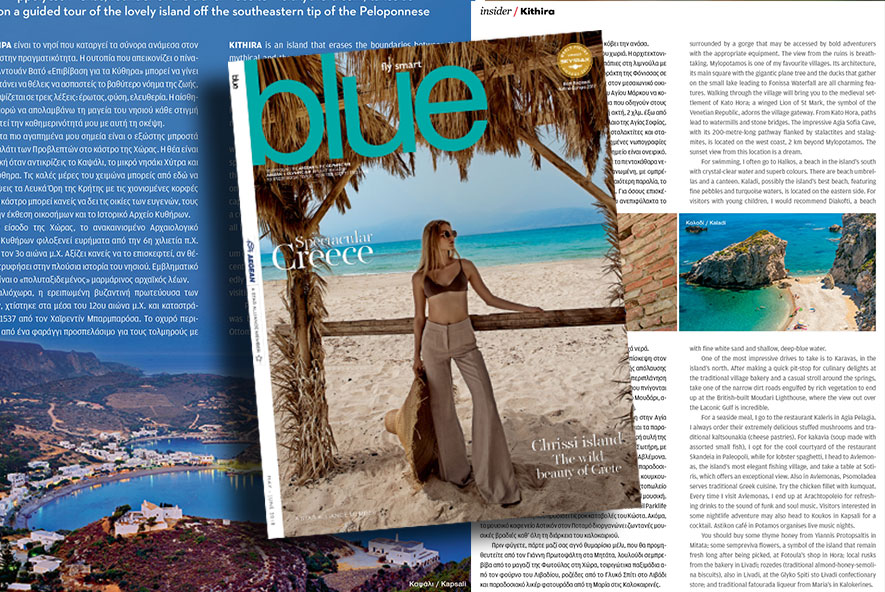
Mythical Kithira
Ippolytos Prekas, founder of the travel website VisitKythera.com, takes us on a guided tour of the lovely island off the southeastern tip of the Peloponnese.
Kithira is an island that erases the boundaries between the mythical and the real. The utopia depicted in the Jean-Antoine Watteau painting The Embarkation for Cythera can be experienced for real, as long as one is willing to embrace the deepest meaning of life, summarised by the following three words: love, nature and freedom. The feeling that I can enjoy the island’s magic at any given moment enlivens my everyday life.
The balcony at the front of the Venetian governor’s palace, within the castle in Hora, the main town, is one of my favourite spots. The view from here is sensational enough when Kapsali, the capital’s port, the islet Hytra and Antikithira are visible, but on clear winter days, you can actually see all the way to the snowcapped White Mountains of Crete. Mansions of nobles, churches, a coat-of-arms collection and the Historical Archive of Kithira are all located within the castle walls as well.
At the entrance to Hora, the renovated Archaeological Museum of Kithira exhibits finds from the 6th millennium BC to the 3rd century AD. The widely travelled archaic marble lion is undoubtedly the most renowned artefact on display. The museum is worth visiting if you are interested in exploring the island’s rich history.
Paleochora, the island’s deserted Byzantine-era capital, was built in the mid-12th century and sacked in 1537 by the Ottoman admiral Hayreddin Barbarossa. The remains of its fort are surrounded by a gorge that may be accessed by bold adventurers with the appropriate equipment. The view from the ruins is breathtaking. Mylopotamos is one of my favourite villages. Its architecture, its main square with the gigantic plane tree and the ducks that gather on the small lake leading to Fonissa Waterfall are all charming features. Walking through the village will bring you to the medieval settlement of Kato Hora; a winged Lion of St Mark, the symbol of the Venetian Republic, adorns the village gateway. From Kato Hora, paths lead to watermills and stone bridges. The impressive Agia Sofia Cave, with its 200-metre-long pathway flanked by stalactites and stalagmites,
is located on the west coast, 2 km beyond Mylopotamos. The sunset view from this location is a dream.
For swimming, I often go to Halkos, a beach in the island’s south with crystal-clear water and superb colours. There are beach umbrellas and a canteen. Kaladi, possibly the island’s best beach, featuring fine pebbles and turquoise waters, is located on the eastern side. For visitors with young children, I would recommend Diakofti, a beach with fine white sand and shallow, deep-blue water.
One of the most impressive drives to take is to Karavas, in the island’s north. After making a quick pit-stop for culinary delights at the traditional village bakery and a casual stroll around the springs, take one of the narrow dirt roads engulfed by rich vegetation to end up at the British-built Moudari Lighthouse, where the view out over the Laconic Gulf is incredible.
For a seaside meal, I go to the restaurant Kaleris in Agia Pelagia. I always order their extremely delicious stuffed mushrooms and traditional kaltsounakia (cheese pastries). For kakavia (soup made with assorted small fish), I opt for the cool courtyard of the restaurant Skandeia in Paleopoli, while for lobster spaghetti, I head to Avlemonas, the island’s most elegant fishing village, and take a table at Sotiris, which offers an exceptional view. Also in Avlemonas, Psomoladea serves traditional Greek cuisine. Try the chicken fillet with kumquat. Every time I visit Avlemonas, I end up at Arachtopoleio for refreshing drinks to the sound of funk and soul music. Visitors interested in some nightlife adventure may also head to Koukos in Kapsali for a cocktail. Astikon café in Potamos organises live music nights.
You should buy some thyme honey from Yiannis Protopsaltis in Mitata; some sempreviva flowers, a symbol of the island that remain fresh long after being picked, at Fotoula’s shop in Hora; local rusks from the bakery in Livadi; rozedes (traditional almond-honey-semolina biscuits), also in Livadi, at the Glyko Spiti sto Livadi confectionary store; and traditional fatourada liqueur from Maria’s in Kalokerines.
Credits:
Επιμέλεια: Φώτης Βαλλάτος / Edited by Fotis Vallatos
Johanna Huber/SI ME/VISUALH ELLAS .GR, clairy moustafe llou
You can see the article also here
See also here:


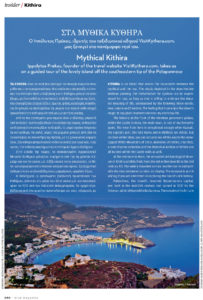
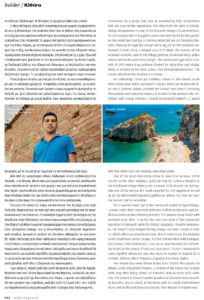
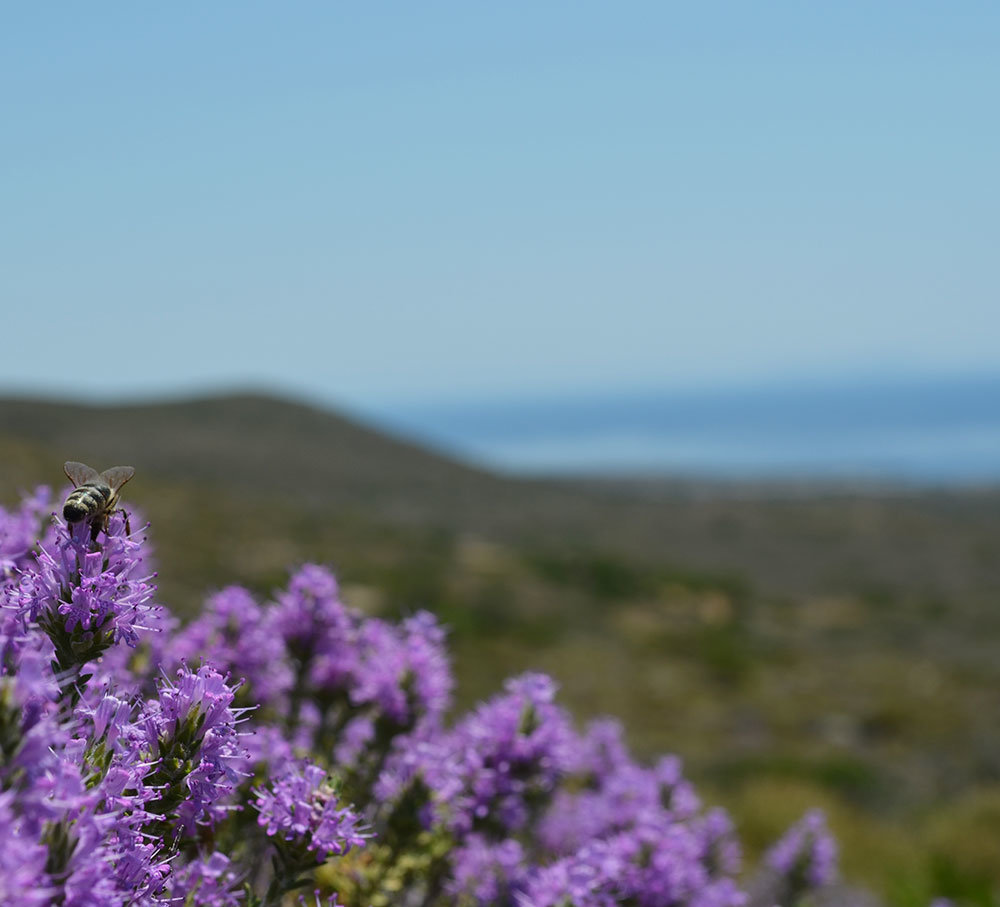
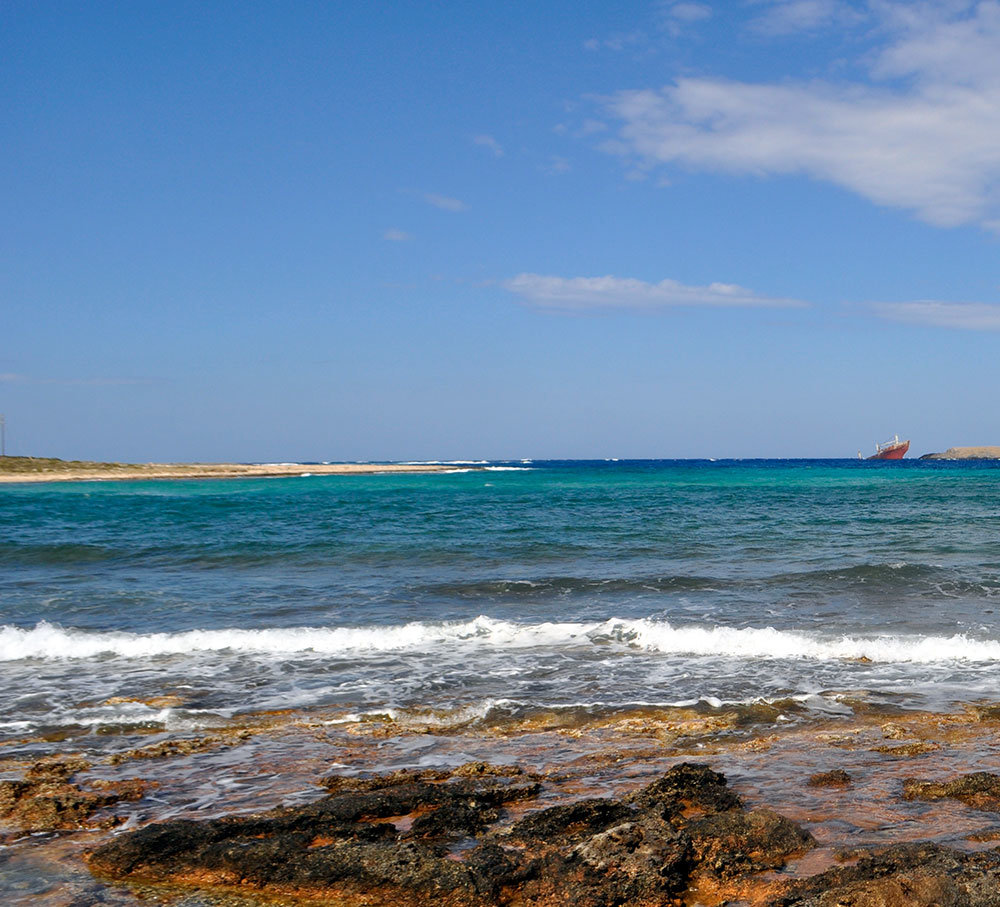
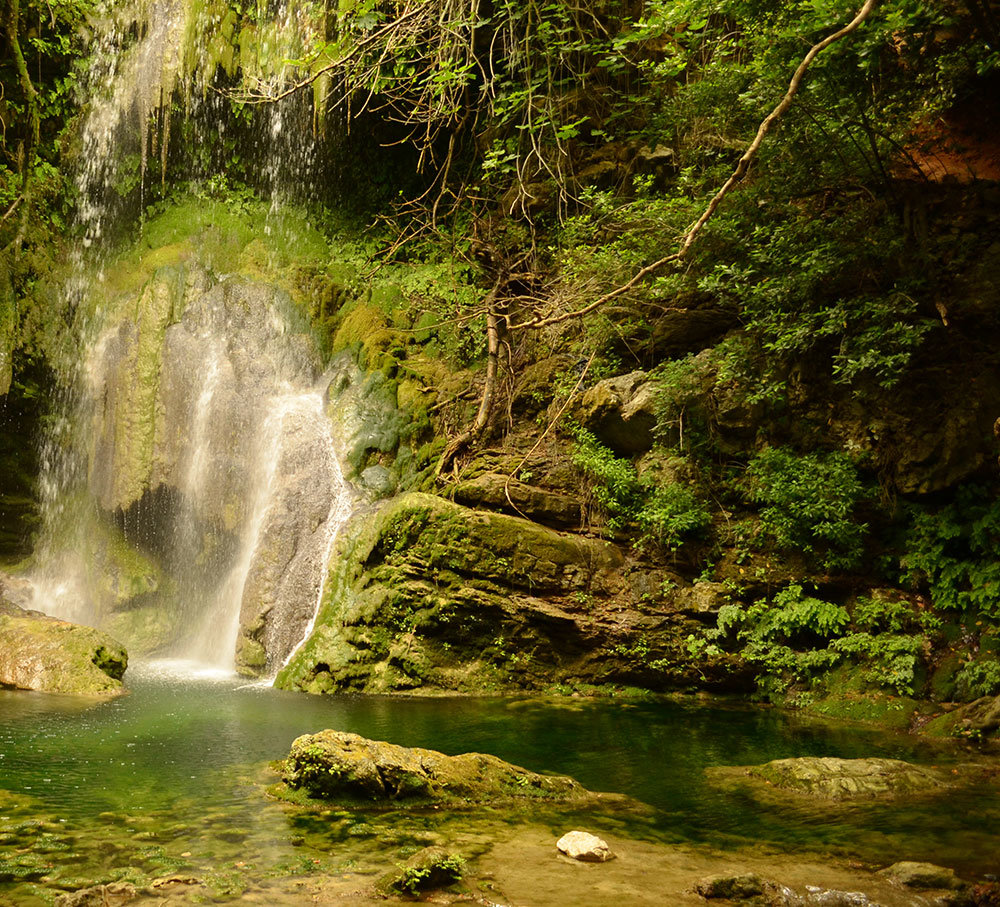
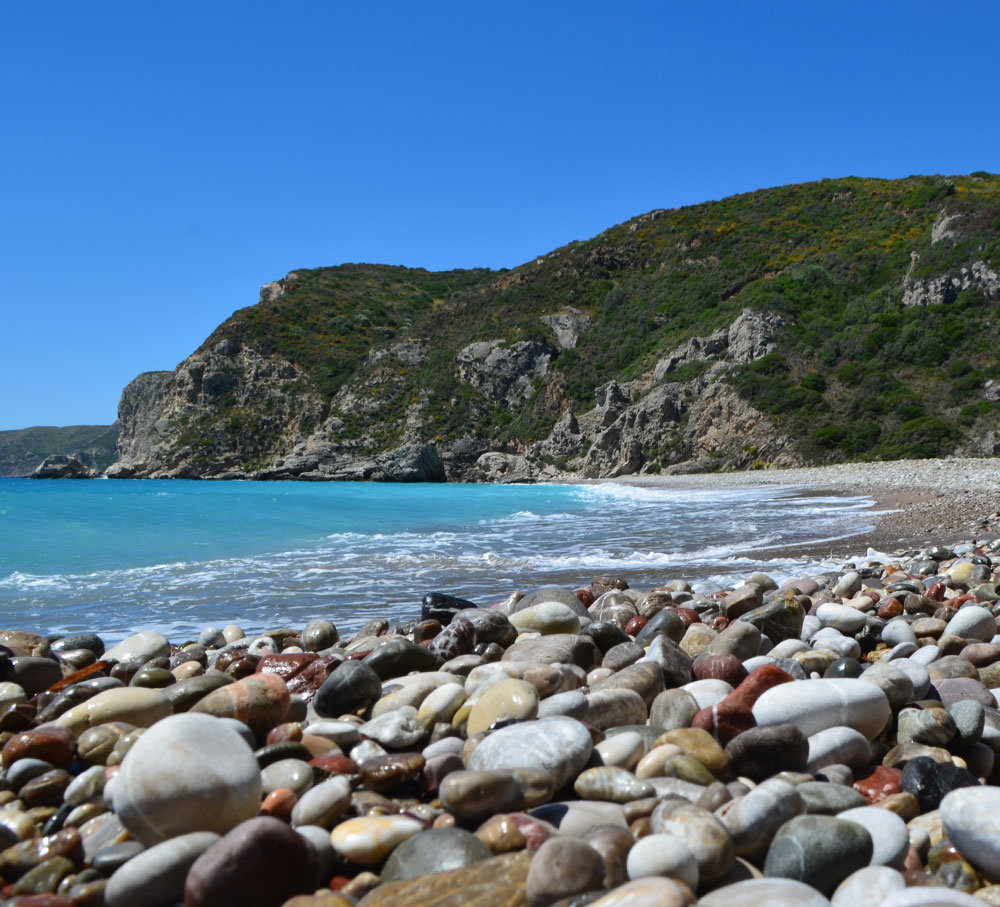

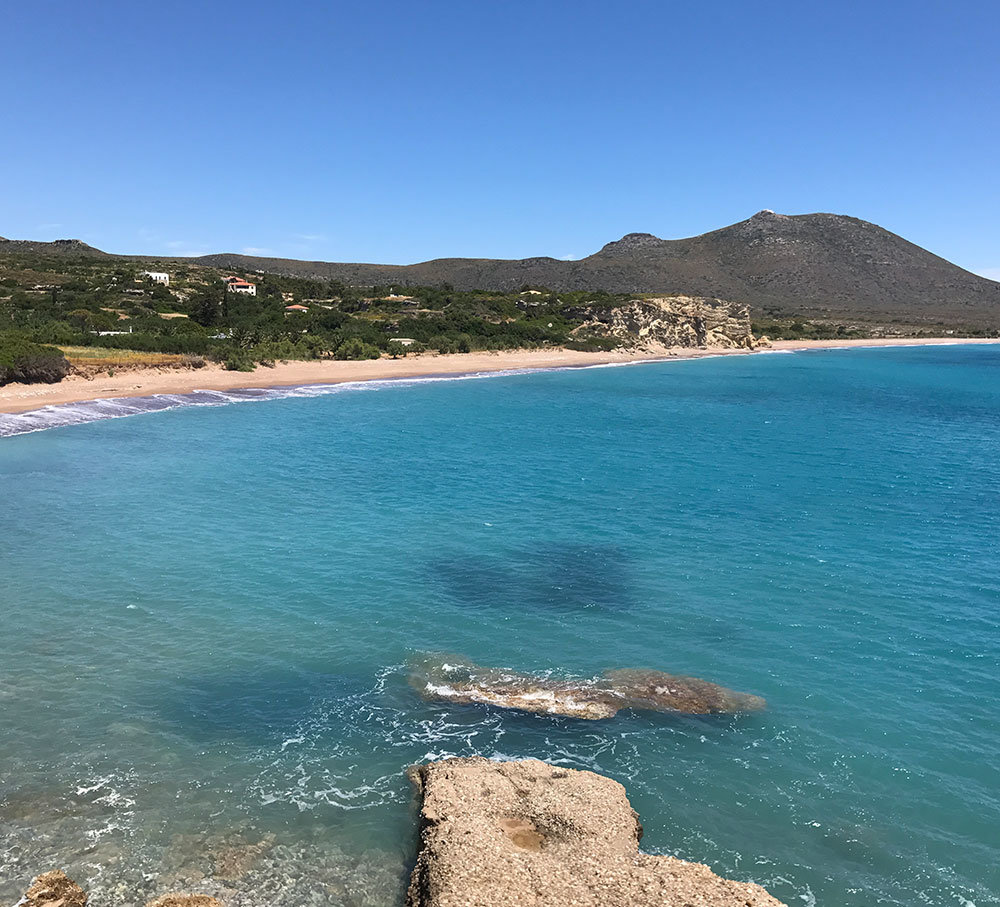
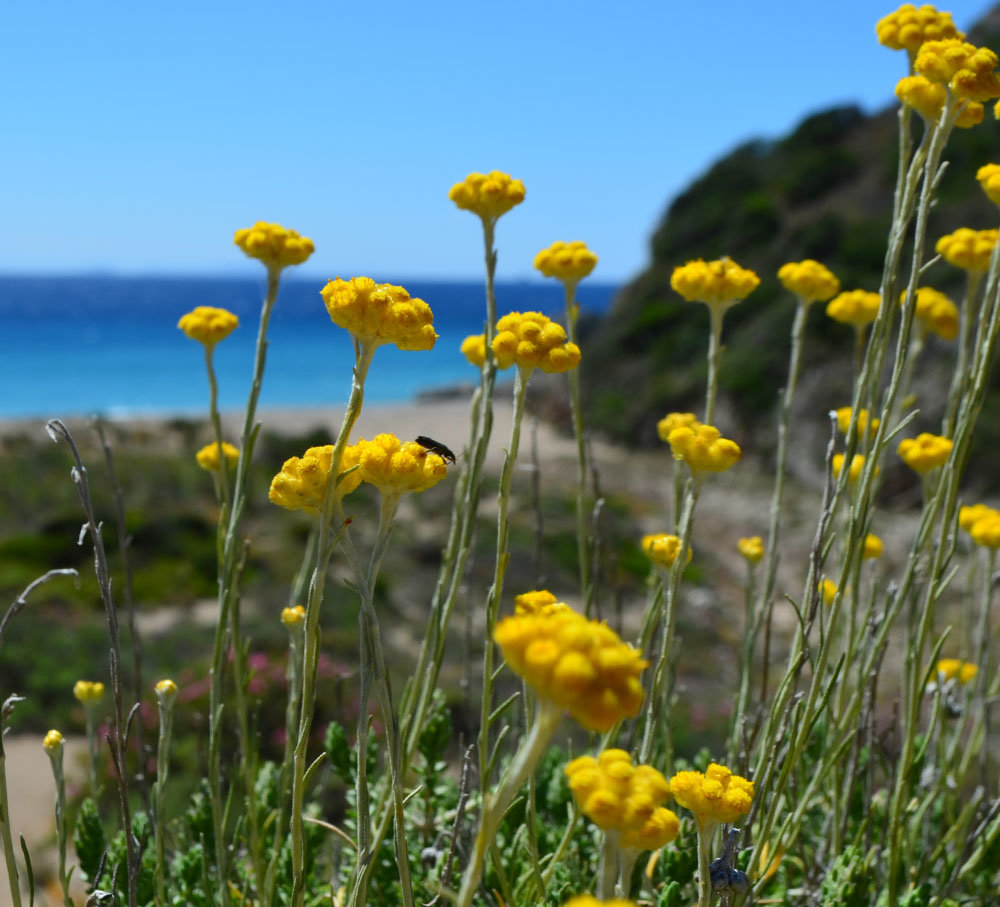
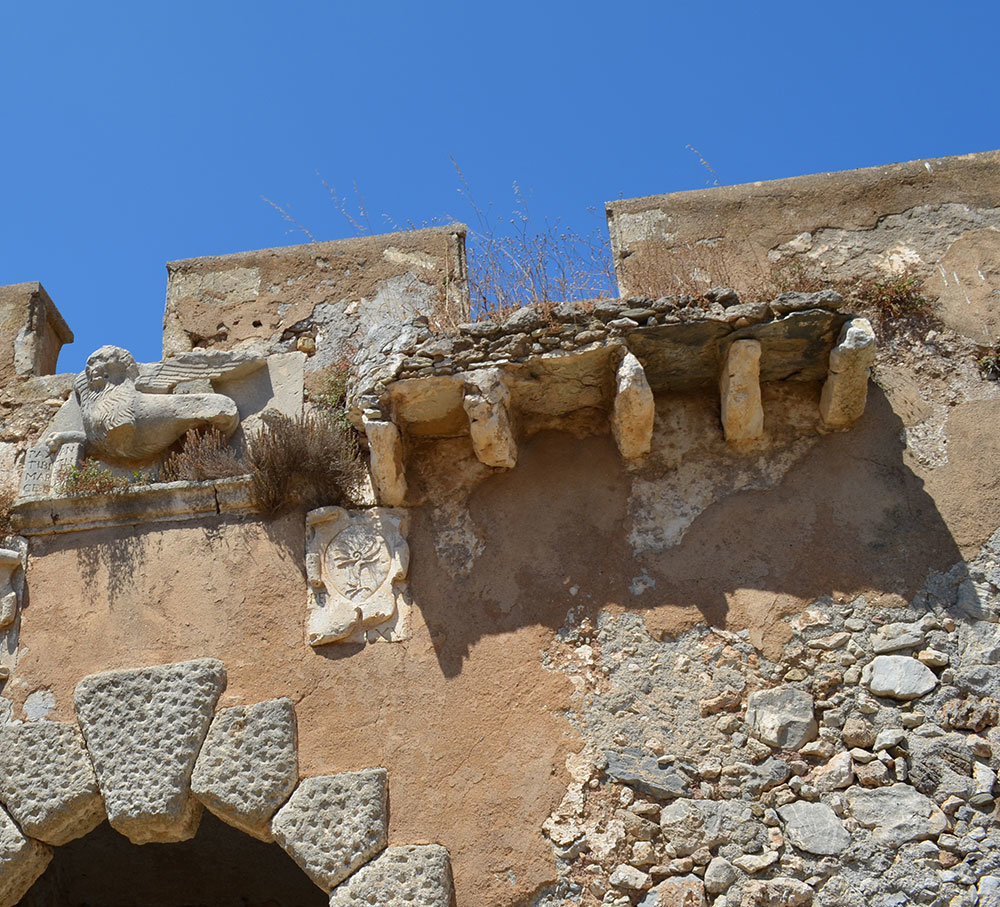


 Ελληνικά
Ελληνικά